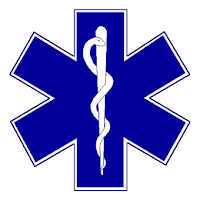Yesterday, we heard Jesus say, “Unless a grain of wheat falls to the ground and dies, it remains just a grain of wheat. But if it dies, it produces much fruit.” (Jn 12:24) And we talked about the need to die to self, to our attachment to sin, to our former ways of life.
Today, you rise to new life. Just as Jesus raised Lazarus from the dead, so too has he pulled you from the grave into new life in him. Lazarus emerged from the tomb bound hand and foot in burial bands and Jesus told the people, “Untie him and let him go." Likewise, Jesus has commanded the same be done to you. You have been untied from the bonds of sin and you have been set free, given new life.
You’ve been given new life, live it. Immediately after these retreats, there's a lot about the "Jesus High." We leave the retreat filled with the Holy Spirit, set on fire with his love. But after a few weeks, days, or even hours, the "Jesus High" seems to dim.
Don’t treat Jesus like sugar and this retreat like Halloween. Don’t let this be just a once or twice a year experience in which you gorge, experience the sugar high, then quickly sink into a sugar coma. Keep the Jesus High going.
There is no good reason for not keeping the Jesus High going. He will constantly invite you into his life and love, everyday. The variable will be whether or not you respond. Nick told me last night, “Our relationship with Jesus can’t be like running into an old friend once or twice a year. It must be a relationship with a best friend that naturally desires daily conversation.”
So, respond to Jesus' daily invitations to you to remain rooted in his life and love. There are five things in particular I strongly urge you to be attentive to:
Sustaining / Living / Staying Rooted In the Jesus High
Our relationship with Jesus cannot be like running into an old friend once or twice a year. It must be a relationship with a best friend that naturally desires daily conversation.
1.) Eucharist
- Remember the high you experienced during Mass and Adoration
- There’s no good reason for not experiencing that on a weekly, even daily, basis
- Attend daily Mass as often as possible.
- Your driver’s license empowers you to make visits to Blessed Sacrament Chapels everyday.
- Exposition of the Most Holy Eucharist at St. Vincent’s is Sundays from 11AM-6PM and Wednesdays from 8:30AM-7PM. Our Lady of Good Hope: Tuesdays 9:30AM-9:30PM. St. Jude’s: perpetual adoration 24/7.
- And as great and intense as Adoration, looking upon Jesus, is; be mindful of how much more great and intense receiving Jesus in the Eucharist at Mass is.
2.) Reconciliation
- Go whenever you need it.
- Make it a regular habit: monthly or once every two months.
- Confessions at St. Vincent’s are Saturdays from 8:30-??? and Wednesdays from 4:30-??? or anytime by appointment. Our Lady of Good Hope: Saturdays 3:30-4:15 or anytime by appointment.
3.) Personal Prayer
- A little bit of time everyday.
- Morning offering, nightly examen, rosary or a decade of the rosary, Lectio Divina, visits to the Blessed Sacrament chapel
- Start small, be faithful, let God do the rest.
4.) Community
- Life Nights - St. Vincent’s immediately after 6PM Life Teen Mass; Our Lady: Sundays 6:30-8:30PM.
- Ministry Hour - St. Vincent’s: Wednesdays at 7:30-9PM; Our Lady: Tuesdays 7:30-9PM.
- Buddy up - the journey is a lot easier when you go two-by-two. “He summoned the twelve and began to send them out two by two.” (Mk 6:7)
5.) Evangelization
- You came to this retreat because someone invited you: a friend, a parent or Jesus.
- Nearly every teen witness credited their coming to their first retreat because a friend invited (EVANGELIZED) them!
- Invite others to the next retreat, Life Night, Ministry Hour, Mass to receive what you’ve been given. “Without cost you have received; without cost you are to give.” (Mt 10:8)
- You are the very instrument Jesus is trying to use to call someone into intimacy with him.
There is no good reason for not keeping the “Jesus High” going. The Lord will invite you into his life and love everyday. The variable is you. Being “Rooted” in Christ is accepting his invitation daily.




